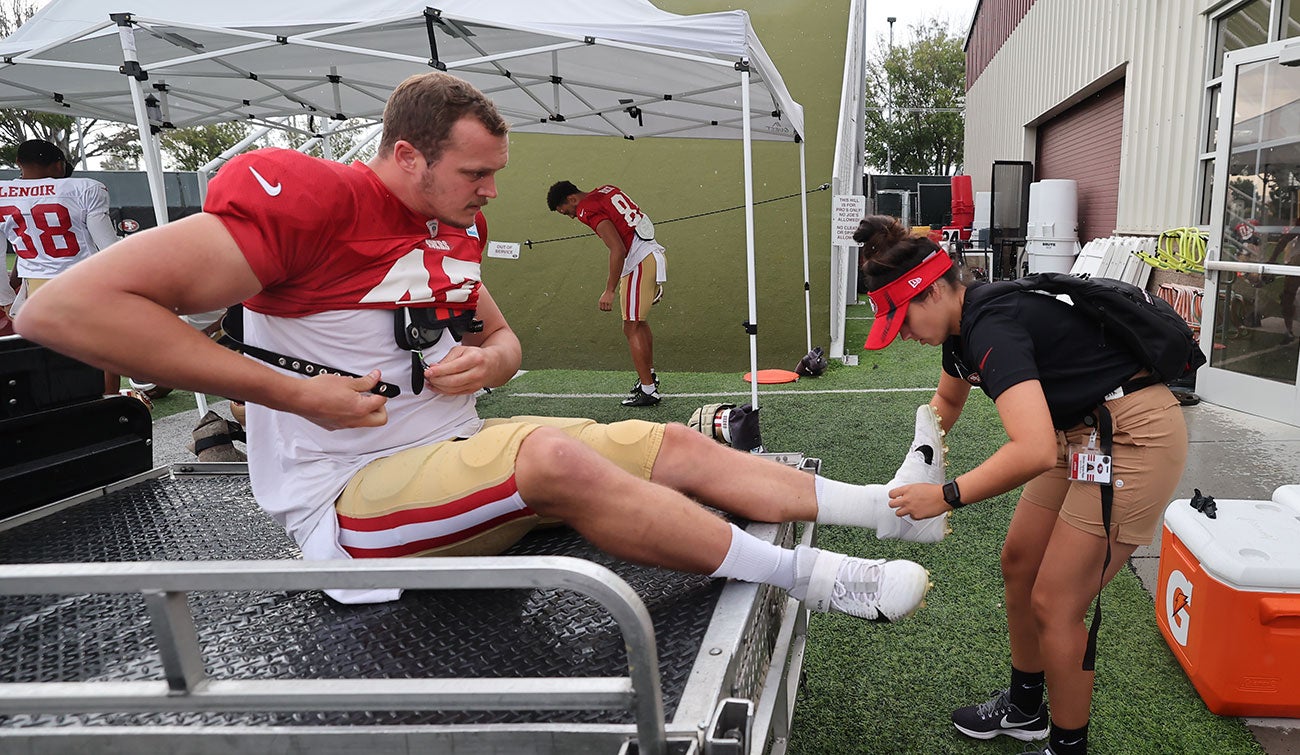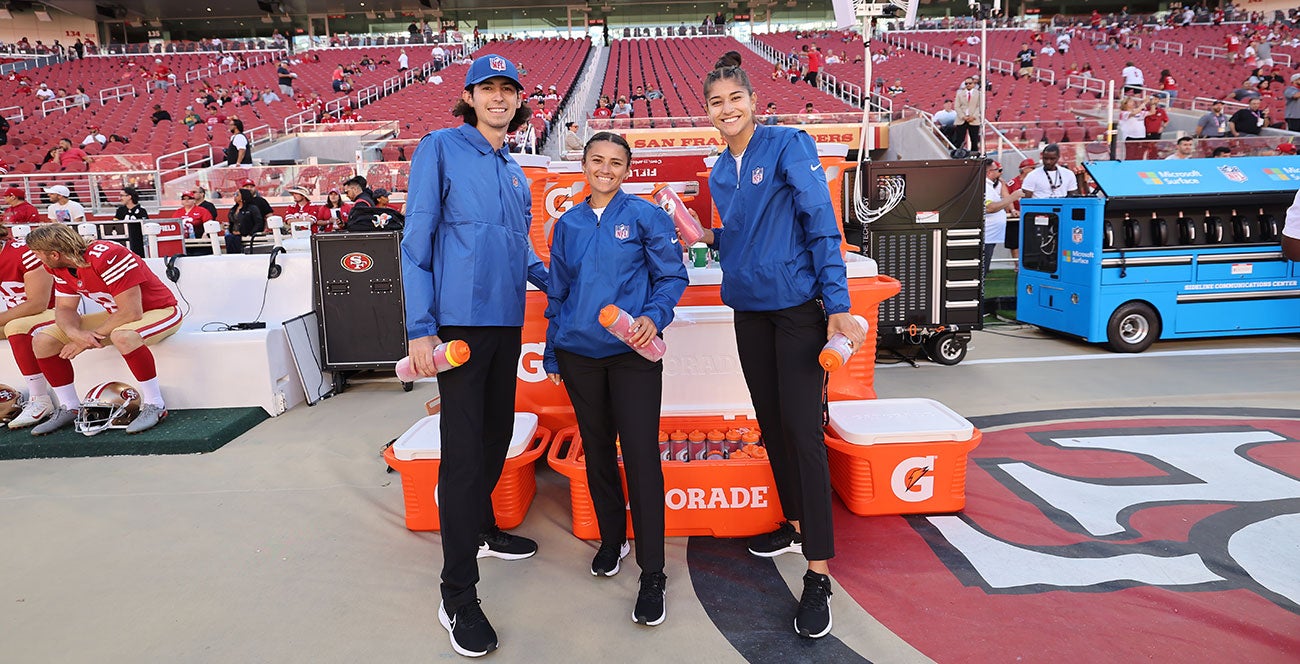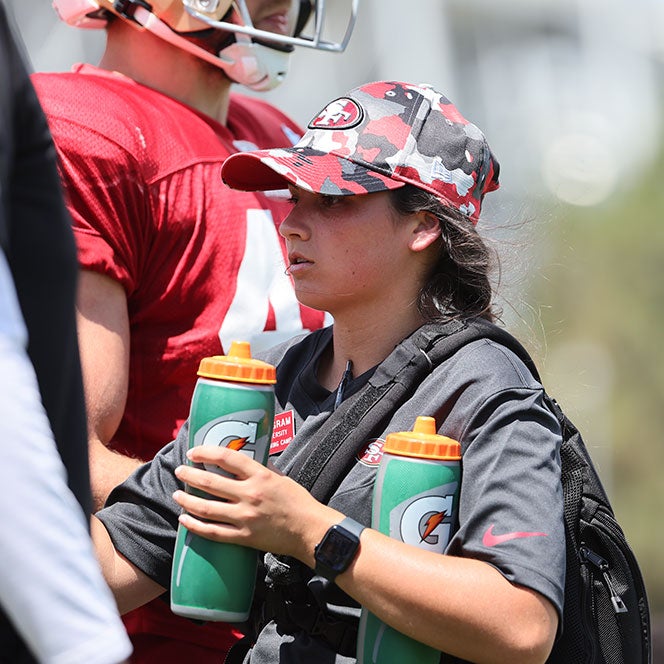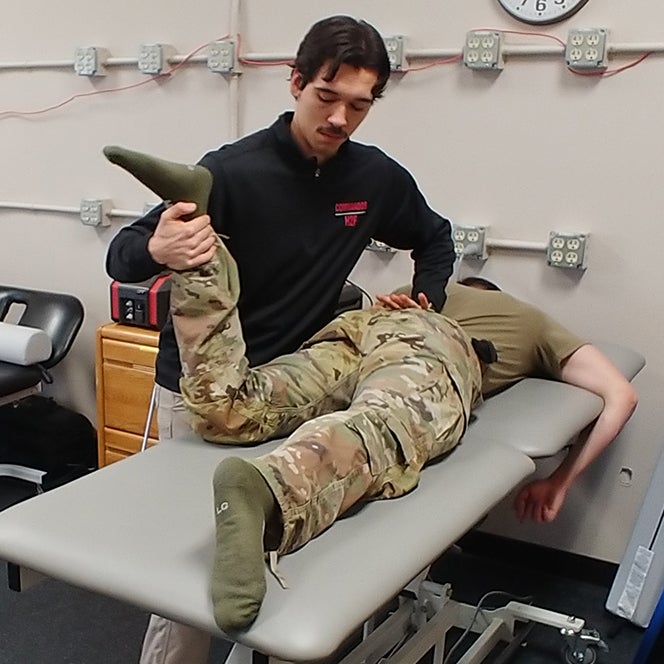For many years now, Broncos have delivered. For the Buffalo Bills. For the Seattle Seahawks. For the Colts, 49ers, Falcons and Chargers.
Surprised? You would be if you had your eye on the ball.
Because Boise State students are working on the sidelines, behind the scenes, after hours, at all hours, all to keep the players ready for game day.

Accredited since the early 1980s, Boise State’s athletic training program has for decades sent students, at the rate of about one a year, to the pros for season and summer internships; three students took part in NFL internships this past year.
The Boise State program is highly successful; the overwhelming majority of graduates have jobs lined up before they finish the program. It’s a no-brainer that the highly selective world of pro football would want known and proven commodities — and Boise State delivers.
According to Dave Hammons, director of the Master of Athletic Training program and associate professor in the School of Allied Health Sciences, the clubs and programs that have taken on Boise State students “are very, very competitive,” noting that full-time athletic trainers often start in the seasonal and summer internship spots. “They like people to get exposed to the rigor.”
Students who apply for summer internships and are accepted typically take part in six- to eight-week preseason stints, then return to their studies in the fall. Sometimes, a summer internship leads to a full-season internship; that was the case for one student, who ended up landing a plum assignment with the Buffalo Bills.
The experience alone tests students’ mettle. They set these opportunities up themselves — “They’re extra clinical experiences that the students apply for,” Hammons notes — and the work is very, very demanding.
Summer with the 49ers, Michigan Wolverine after graduation

Sabrina Ingram-Rajan can attest to that. At 23, she is a former 49er — one of the COHS master’s students who already have a pro football summer internship under the belt. She’ll graduate with her master’s in athletic training in May — and then will become a Wolverine, with a seasonal internship among the University of Michigan football players.
The clinical rotations that have been part of the Boise State program, and her experiences with the 49ers and at a kids’ sports camp, have set her up for pretty much anything.
“The best part (of the Boise State program) is our clinical range,” she said. “I worked with the Steelheads team as a rotation. We have professional to high school to lower-level collegiate level, a very wide range.
“Each rotation gives you a different insight and how to really make things work for the best for the athletes.”

During her time with the San Francisco team last summer, Ingram-Rajan helped with treatment, field set-up, practice and game coverage. The days were long and the work, addictive.
“60- to 80-hour weeks for all six weeks,” she recalls. “The people, the staff, the organization was great, the athletes … They are less intimidating than you think they are.”
Hammons’ program, like so many others in Boise State’s College of Health Sciences, benefits from a very involved faculty and long-standing relationships in the community. The athletic training students routinely also find internship and job placements with local clinics, hospitals and health systems, teams, schools and school districts — along with Major League Soccer, the National Women’s Soccer League, Disneyland (caring for performers and cast members), sports camps and rodeo organizations.
Even the armed forces need athletic trainers
The military is also hiring. Increasingly, graduates of the program, who are not necessarily members of the military or even veterans, are sought out by the Army and elsewhere among the armed forces, for all the same reasons sports teams and schools need their services.

Owen Mainord is one of the Army recruits — employed indirectly as a civilian by the military through a contractor. Born in Hawaii, with a childhood and early adulthood in Pennsylvania and Idaho, Mainord graduated in May 2022 with a Master of Athletic Training degree from Boise State. For the past eight or so months, he has been working at Fort Drum in New York, performing urgent care triage, working in injury prevention and doing all the things you might expect of an athletic trainer — among Army personnel. He knows of multiple other Boise State graduates scattered among posts and bases, and expects that with this emerging area of military interest, the future is likely to hold significant promise for him and others like him.
“It’s a very good job for an athletic trainer,” he said. “It’s great that I have a team of physical therapists, athletic trainers … I have this referral network, and that’s good for a young professional.”
Of the 16 students who completed the program last year, three-quarters had landed full-time jobs before graduation.
“We’re a hundred percent placement,” Hammons said, adding that ironically, the pandemic expanded opportunities for athletic trainers by showcasing their versatility at a time when many organizations were stretched to meet demands for clinical services.
“The hands-on clinical experience is invaluable to these students,” he said. “There’s no shortage of athletic training jobs right now.”